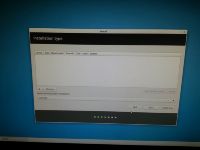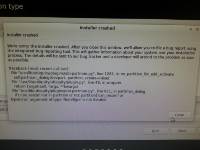A few weeks ago my main Linux workstation started to fail, it only stays online for 10-15 minutes before powering off. It's likely the PDU is almost dead, haven't spent time to diagnose it. What I had planned on instead was simply replacing it. I had a PC handy that was previously used for Netflix only. But since I have a 360, I can stream Netflix through it. So no need for this 'media PC' to serve media, it was rarely used anyhow and the specs are better than my old Linux box. Seemed like a great idea to use this as my new workstation PC since it was more or less idle before, and more powerful than what I was using.
For reference, I created a Mint 17 bootable media via UNetBootin. Installing this on my local L5420 server and my laptop, no issue. However when trying to install on my Dell Optiplex 990 PC... it fails, repeatedly. I even flashed other media to the drive, tried Debian, different Mint versions, and Ubuntu desktop and still, the same issue.
Hoping the kind folks here can point me in the right direction. For reference, here's just some facts:
I've checked the BIOS settings and can't seem to locate anything that may be preventing this from working properly. I even swapped the drive with a different one... and still, no go.
Any ideas? I've installed different OSes dozens and dozens of times over the years and have never once actually experienced any hiccup like this. Most the stress comes after installation, trying to find drivers for obscure things. I've actually never experienced an issue during the installation process before, so any assistance is welcomed.
For reference, I created a Mint 17 bootable media via UNetBootin. Installing this on my local L5420 server and my laptop, no issue. However when trying to install on my Dell Optiplex 990 PC... it fails, repeatedly. I even flashed other media to the drive, tried Debian, different Mint versions, and Ubuntu desktop and still, the same issue.
Hoping the kind folks here can point me in the right direction. For reference, here's just some facts:
- When booting up to the OS on the USB, it detects the harddrive and knows it's size. I can use the OS via a live-usb sitck no issue.
- When trying to install the OS on the drive, it doesn't detect anything. No partition layout. No drive. Nothing.
I've checked the BIOS settings and can't seem to locate anything that may be preventing this from working properly. I even swapped the drive with a different one... and still, no go.
Any ideas? I've installed different OSes dozens and dozens of times over the years and have never once actually experienced any hiccup like this. Most the stress comes after installation, trying to find drivers for obscure things. I've actually never experienced an issue during the installation process before, so any assistance is welcomed.


